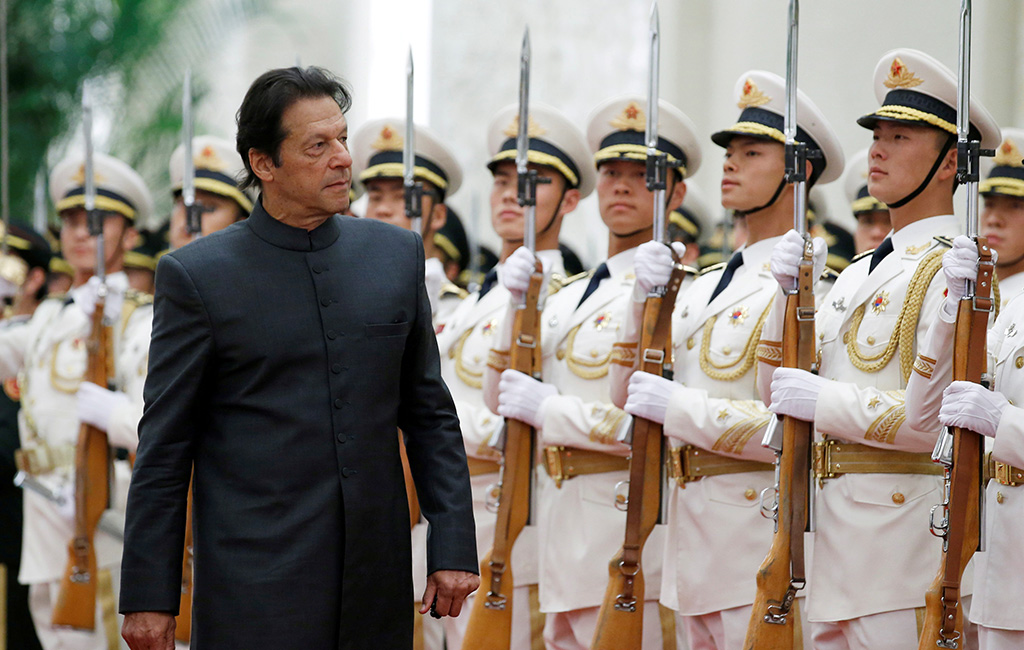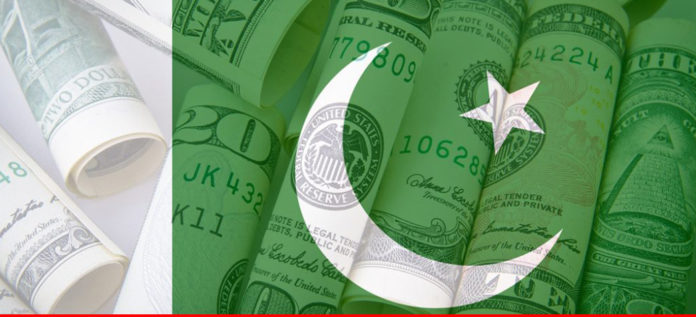It sounds paranoid to expect miracles in this age of 5G. At a time when the global economy is nosedived and even developed countries are in a fix, owing to a relentless pandemic, Pakistan has swung a surprise out of the blue. Its economy is talking. It is in a takeoff mode and to the dismay of pundits of doom, Pakistan is set to become not only self-reliant but also do away with the baggage of deficit to a greater extent in years to come.
This is no small achievement for a government which remains literally bogged down with non-issues and that too at the hands of unscrupulous elements. Prime Minister Imran Khan has been able to see light at the end of the tunnel by virtue of his belief in the tangibles of the country.
Having changed his economic gurus for umpteenth times in the last three years, it was widely believed that the direction of the incumbent is in disarray and economic stagnation will prove to be his Waterloo. But it seems the Captain has won the gamble, and his government has bet on the right roulette!
Before we dwell into what the budget has promised for a stability starved and inflation-laden nation, let’s take a cursory look at some current indicators of the economy.
1. The economy has grown by 3.6 per cent and is projected at 4 per cent
2. Foreign remittances jumped by a hefty 29pc to an all-time high of $28.2bn (April-May estimates)
3. Despite the pandemic, foreign direct investment stood at around $170 million
4. Services sector is projected to grow @ 4.43 per cent
5. Agricultural growth estimated at 2.77 per cent
6. Industrial growth projected @ 3.57 per cent
7. Foreign exchange reserves $16 billion (average at a glance)
8. Inflation hovers from 9 to 11 per cent
9. Food prices are at a 10-year high (international impact of imports)
10. Unemployment is @ 6 per cent
The above statistics drawn from independent sources paint a somewhat healthy picture of the economy. The good point is that the government is focusing on maximising the agricultural yield; soaring industrial output and pumping resources to boost the services sector.
All it needs is a sense of direction, as well as stringent implementation, to realise the hallmarks of growth, coupled with sustainability. While the target of the government remains poverty alleviation, it will be an uphill task to strike a balance between subsidies, tax concessions and at the same time ensure productivity across the board.
Prime Minister Imran Khan’squest is to apply the Chinese model
to lift around 100 million people from the abyss of poverty. This has rightly prompted him to restructure the paradigm of budgetary allocations in the economy.
For the first time in Pakistan, respective ministries have been put at the vanguard to specify growth targets, and recommend tax and budgetary allocations, as they deem fit. To this day, this task was laboured at the cost of contempt by the Federal Bureau of Revenue. The cart has finally been put behind the horse and luckily it seems to be moving.
Under the new strategy,
the FBR’s role will be of a mere revenue collector and watchdog. Its powers to harass the ‘taxizens’ shall be clipped. It will be confined to work as a regulator in pulling retailers into the tax net and going after the non-filers. Moreover, the new self-assessment option will take away the Sword of Damocles over the tax-payers head, bringing a sigh of relief to the business community.
So far, so good! But it goes without saying that 85 per cent of people in this country DO NOT pay taxes, including most of the lawmakers, as well as all those who are bona fide Louis XIV in a poor nation of 220 million! Moreover, the generated tax is subject to corruption as fudging of figures is carried out hand in glove with revenue officials.
Thus, the proposed tax collection target of Rs 5,829 billion during the fiscal year 2021-22 will not be easy to attain. On a futuristic note, the government eyes a tax collection of Rs 7trillion by 2023. For this to happen, the government will have to grant full autonomy to the FBR, run it on professional lines by curbing discretionary powers of officials and document the economy by ensuring that all cash transactions are taxed.

The federal budget 2021-22 is rosy and, surprisingly, has something for everyone.
It promises to ameliorate the poor and has taken pains to understand the common man’s misery. Though national budgets are bookkeeping in macroeconomics, its trickle-down effect to the lower strata of the society will only be possible if inflation is checked, and the country swings into mass production. That is where growth lies, and that is how we can effectively silence the criticism of donors, especially the International Monetary Fund, as they cry foul for not listening to their dictates.
This budget has taken a leap forward and development spending has been hiked by more than 40 per cent. It is a good omen. It will come as a shot in the arm for businesses, especially manufacturing and financial services, the worst hit sectors at the hands of novel coronavirus.
Likewise, industry has received sweeping tax and custom duty exemptions across the board in an attempt to broaden production. Moreover, the proposition to raise labour wages by more than 20 per cent is a welcome conciliatory effort.
The budget articulately touch-bases sectors such as pharmaceuticals, textile, paints, paper and board, steel, chemicals, leather, fibre optics and cables as well as automobiles; hoping that the more they are tempted to produce under tax concessions, the more it will buoy exports. It could be a win-win proposition as stagnating industries are encouraged to invest in men and material for obvious dividends.
Similarly, tapping the automobile and smart cellular phones sector by scrapping sales tax and doing away with federal excise duty, as well as bringing down its production price, will encourage at least 50 million new consumers to opt for a car and smart gadgets in the next few years. It is tantamount to a New Deal of sorts in enhancing the lifestyle of the nation and that too with local production.
Last but not least, the budget has made a conscious attempt to woo investors, traders and brokerages by reducing Capital gains tax on stocks by 2.5 per cent. Likewise, a host of turnover taxes are being scrapped, enabling the bourgeois to roll in their cash bundles on the bourses.
The chord of growth, however, lies with the power generation sector. This is why the Prime Minister has pointed out that the electricity tariff will not be raised. The budget, too, has allocated a lion’s share of subsidy to the tune of Rs596 billion. It’s high time the government settled the row with Private Power Producers (IPPs) and redrafted a lower tariff protocol for the next 20 years, at least. With the building of new water dams and rectification of the supply system, it is hoped that cheap electricity tariffs will open up vistas of production.
So what’s the way to go?
Pakistan is in need of a mega-growth economic policy. All previous efforts, hypocritically indoctrinated by donor agencies to stem mass production, have landed us in stagnation. Rather, the rupee and exports degenerated to the core. There is no need for any kind of sustained/controlled growth. Expand as much as you can and this mega production will open the doors for massive exports.
There is a starving food market out there in Asia, Middle East and Africa, and Pakistan’s competitive produce will be a welcome addition, ensuring a bonanza of foreign exchange. It’s a pity that UAE, Saudi Arabia, Kuwait and Oman to name a few import most of the perishable stuff from Ahmedabad, Mumbai, Manila and Colombo ports, whereas Karachi has a better produce and sits at a shortened distance. A point to ponder in terms of our accessibility and competence!
Besides, Pakistan needs wealth generation. Prime Minister Imran Khan, luckily, has a vision as he talks of building new cities. Yes, this is how mass production and free-flow of cash is conceptualized in the corporate horizons. Look at Saudi Arabia. In order to beat the pestering recession, it unfolded its 2030 Vision and decided to build a mega-modern city on its western shores. Its economy bounced back in no time.
Prime Minister Khan should go ahead with not only building at least one mega-city vertically in each of the provinces; but also put down his foot to develop the two strategically-located islands near Karachi. No suzerainty excuses advanced by the Sindh government are acceptable. Rather, it is a ploy to keep Sindh further backward. Estimates say, at least, $100 billion are waiting in the wings from an international consortium of financers. Take the plunge, and rebuild Karachi as the new magnate of South Asia. Gibraltar, Athens and Malta have walked that path. Why shouldn’t we?
As a good fortune, this government’s stress on the construction industry has hit a jackpot. The goldmine is thrown open. More than 25 local industries, including cement, wood and ceramics, are reaping enormous profits. The wheel of the economy has started moving.
Mr Prime Minister
monitor the macroeconomic growth closely and personally. Expedite the process of restructuring, and instant privatisation of loss-making state-owned enterprises. Enough of feeding a dying cow slaughter it for a cause! Do not listen to tales from sycophants. Make sure that inflation is curbed and the common man is supplemented with a changed lifestyle. Let there be universal health and education by 2023. Reduce poverty hands down with sweeping vocational training across the country. At least, the end of your tenure shouldn’t carry excuses and misnomers.
Captain! You need to bowl very lethally in the last leg of your spell against the status quo. Grant the nation a blanket social security. There is no second thought in it. ‘Absolutely Not’!





